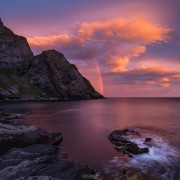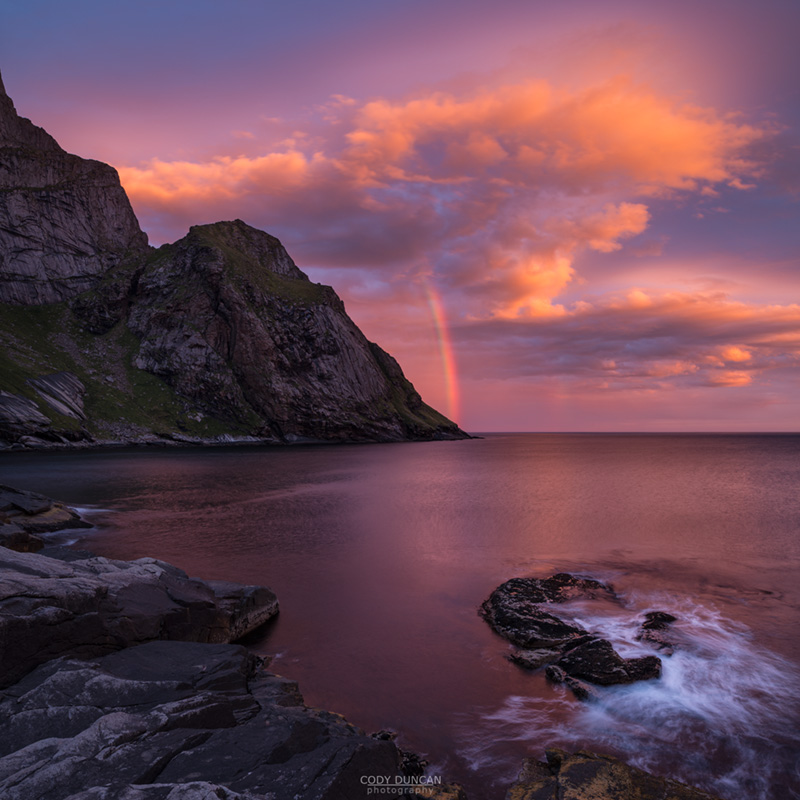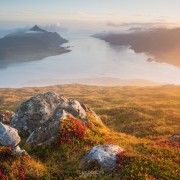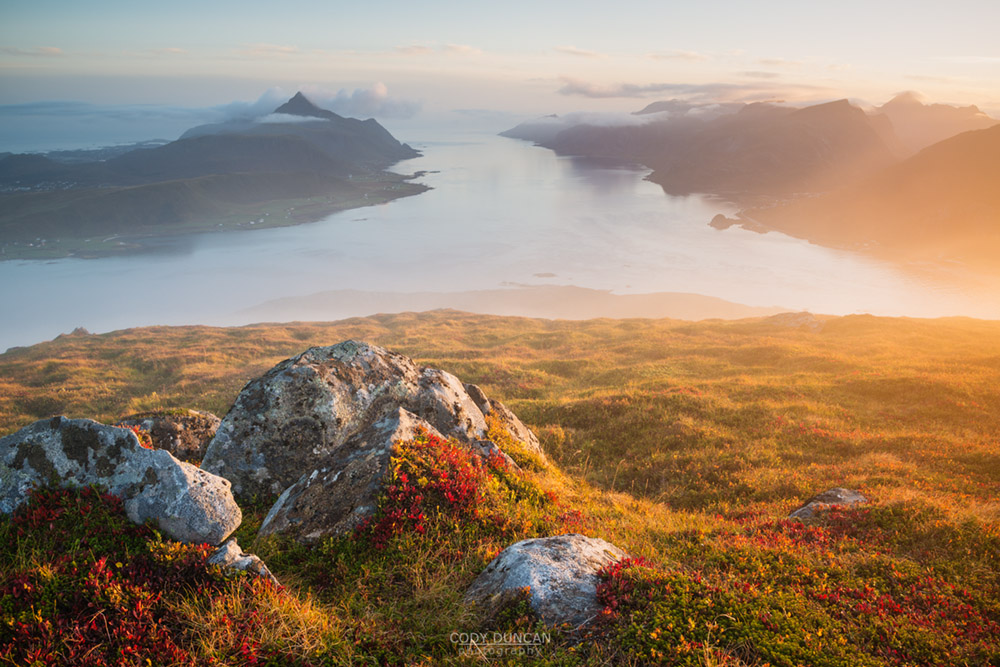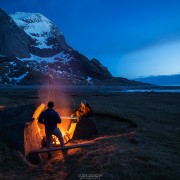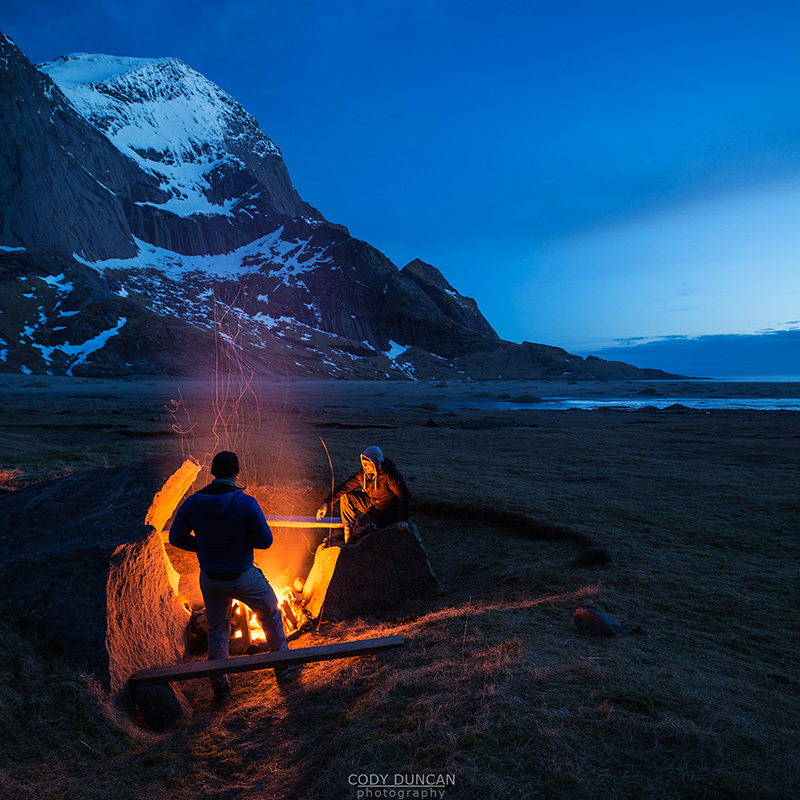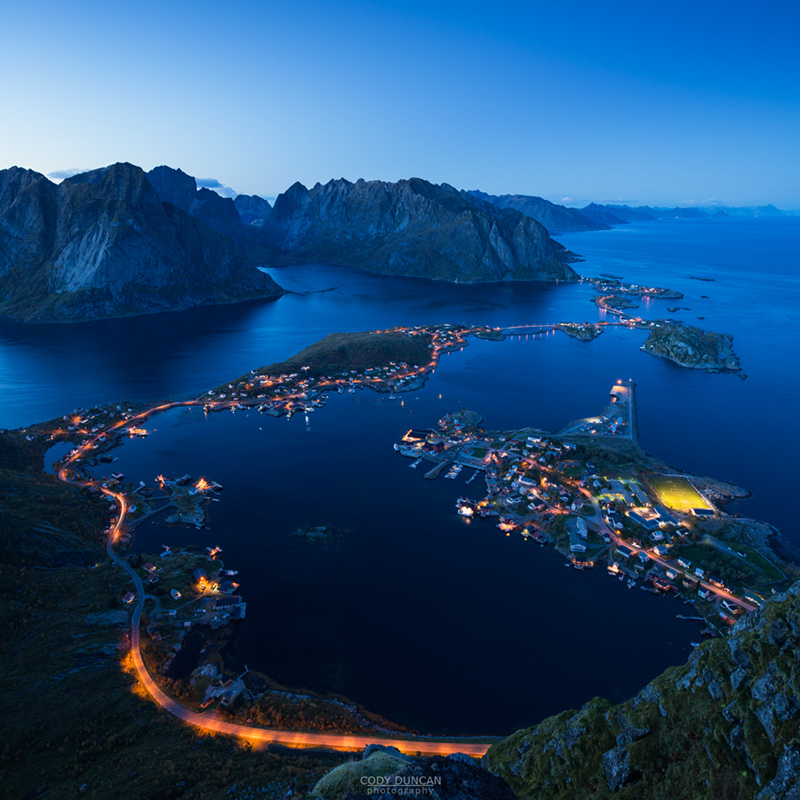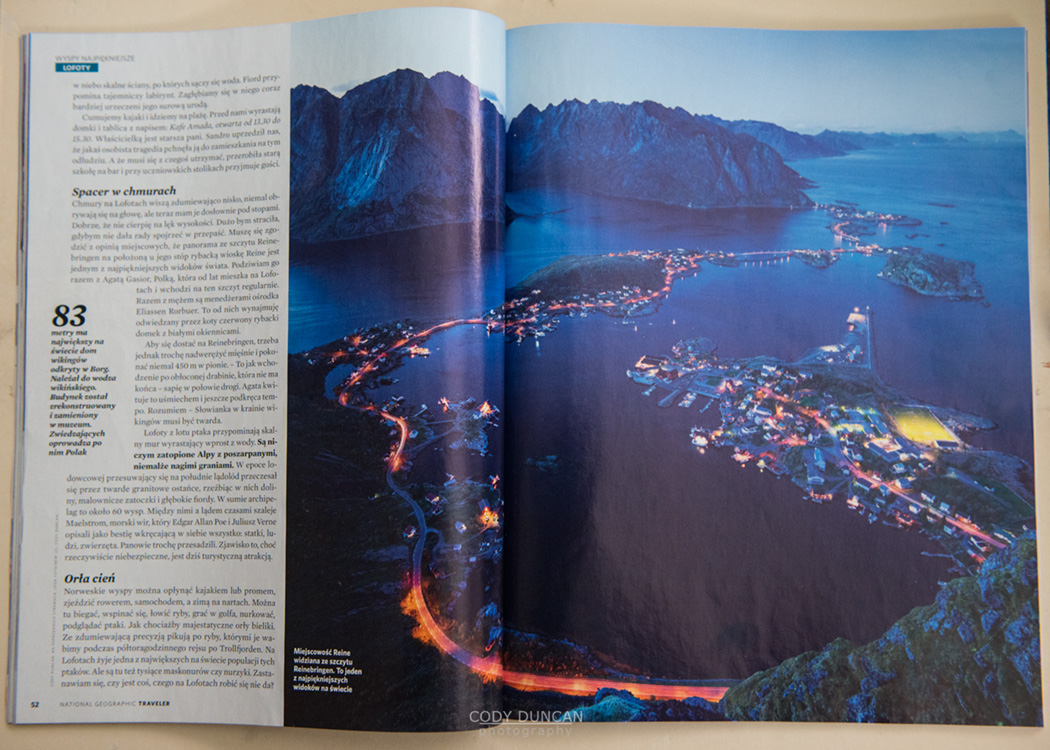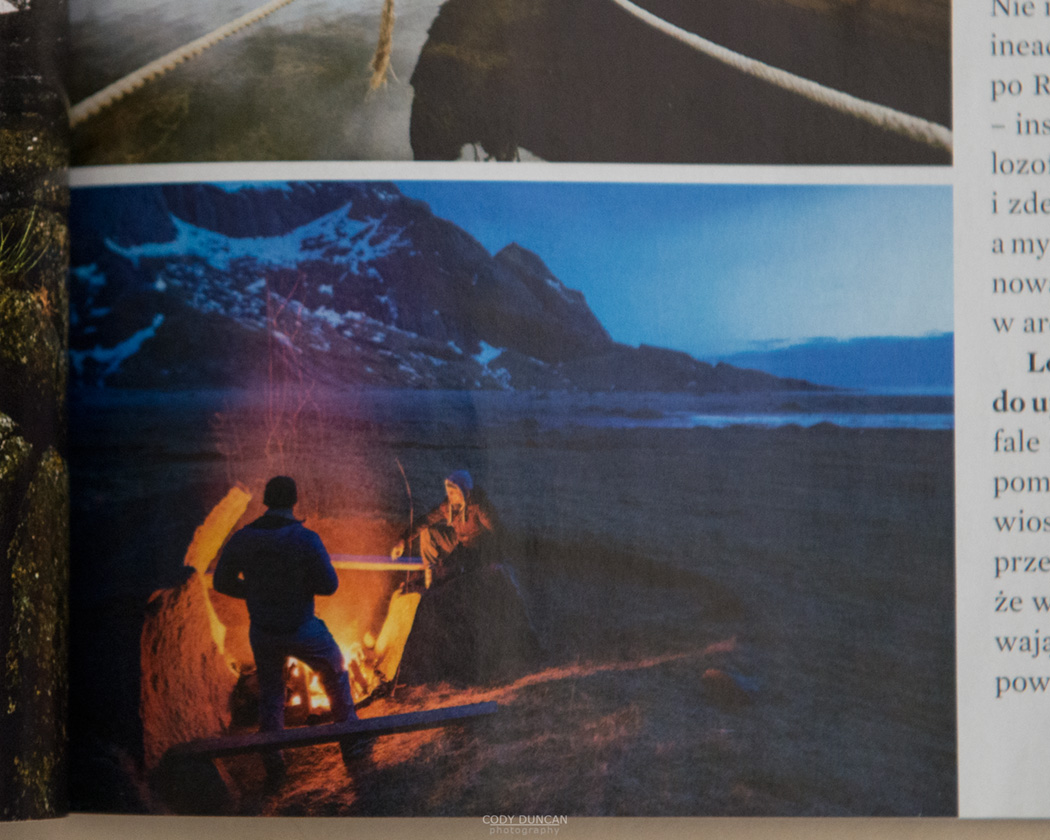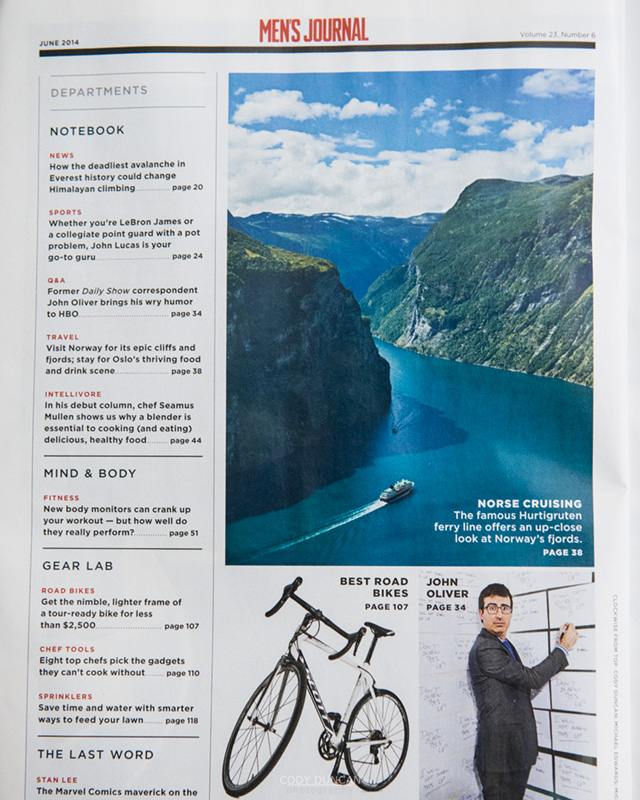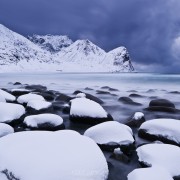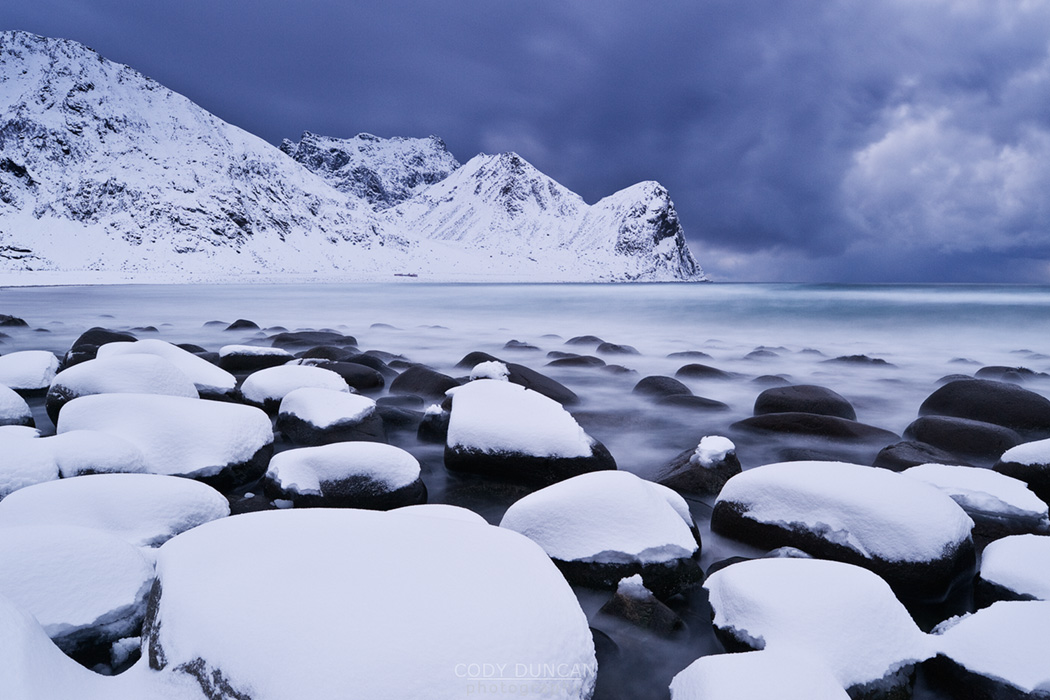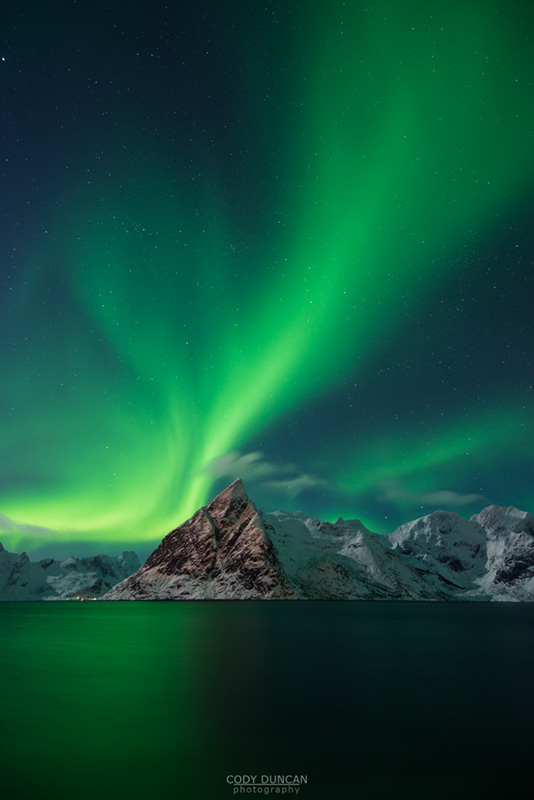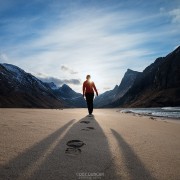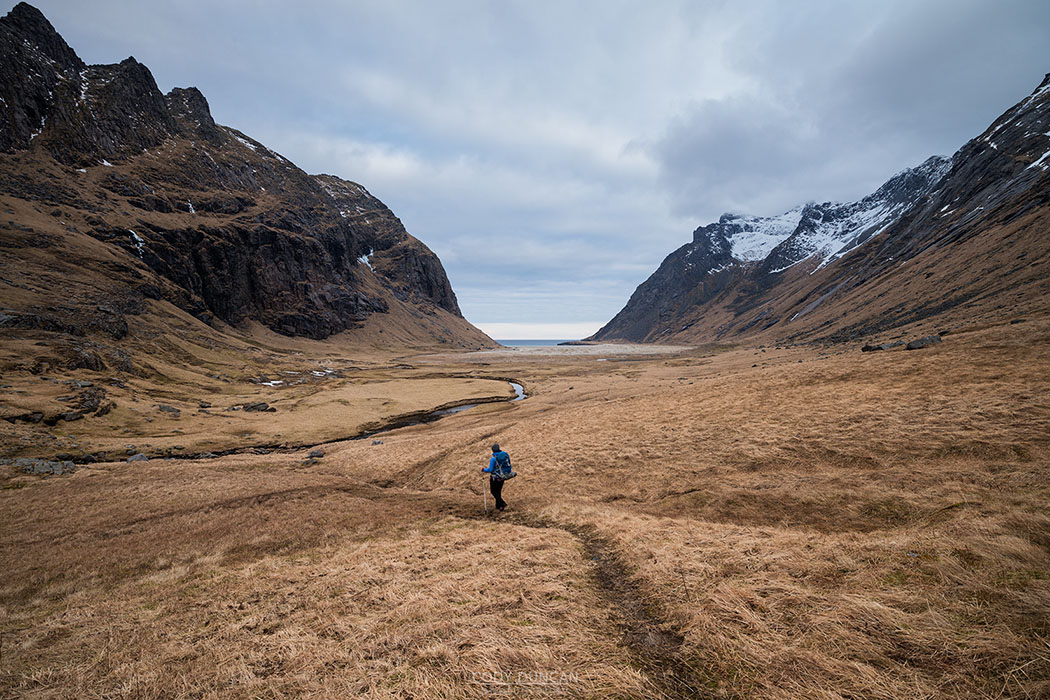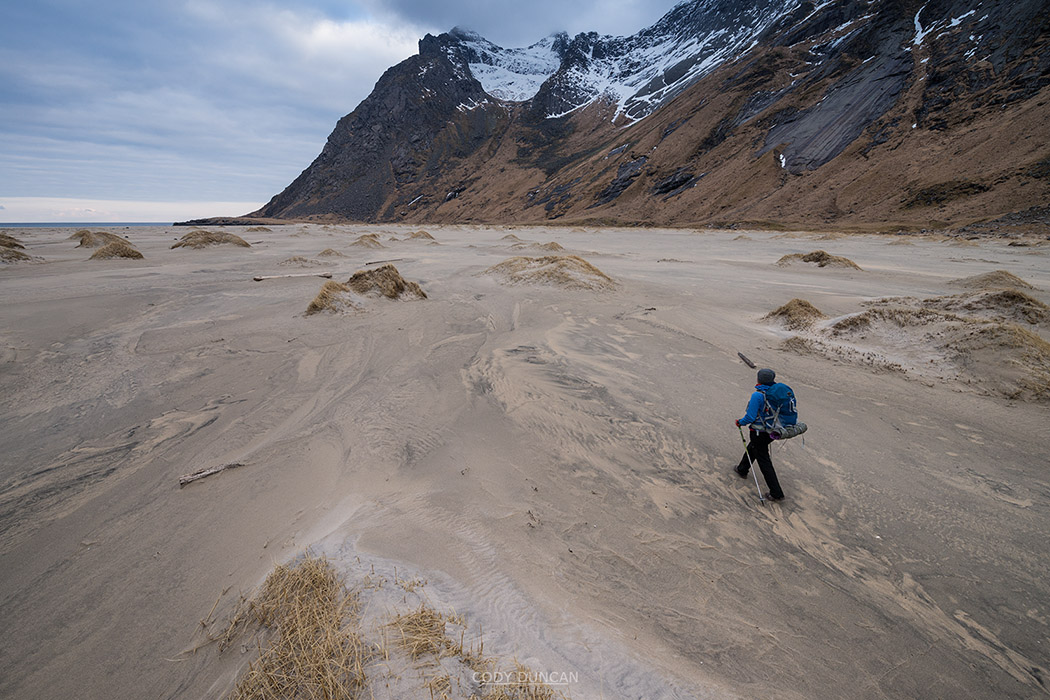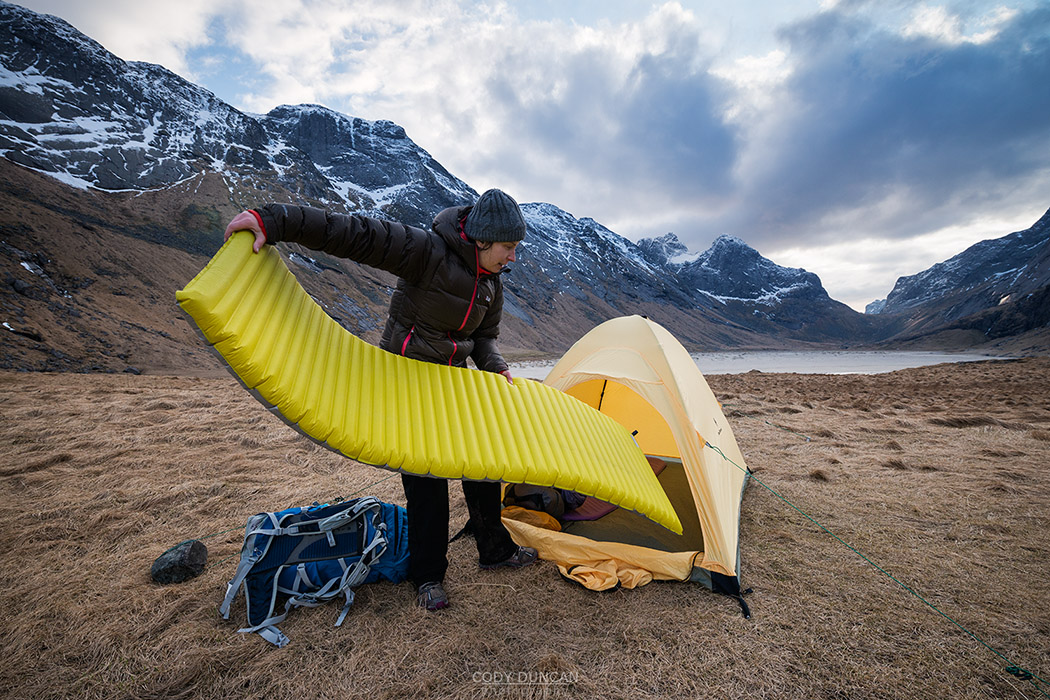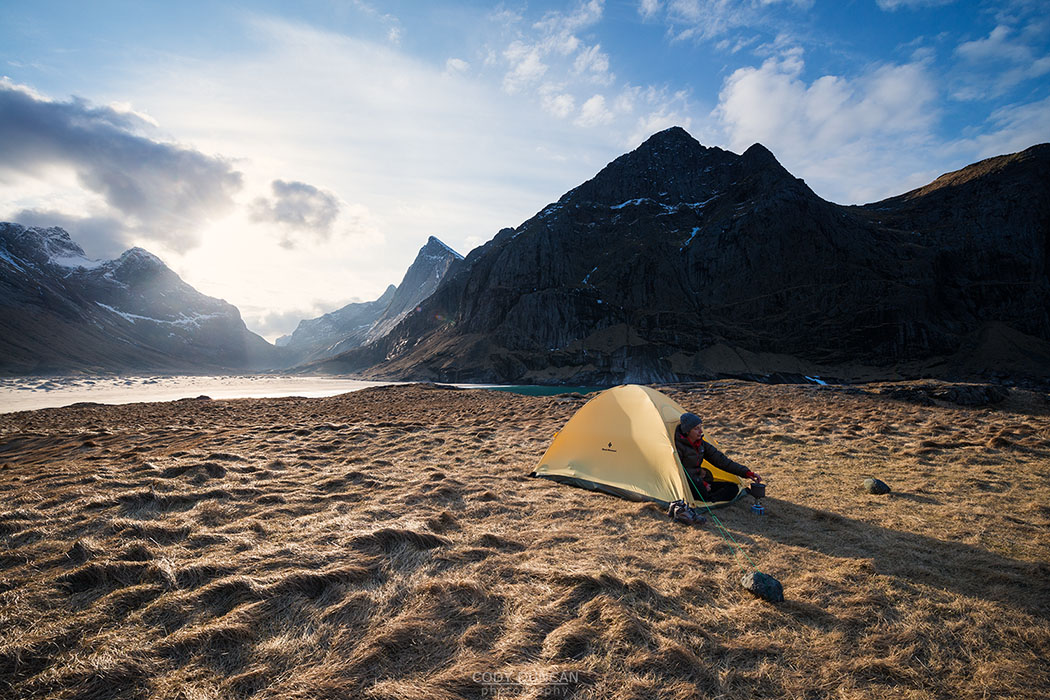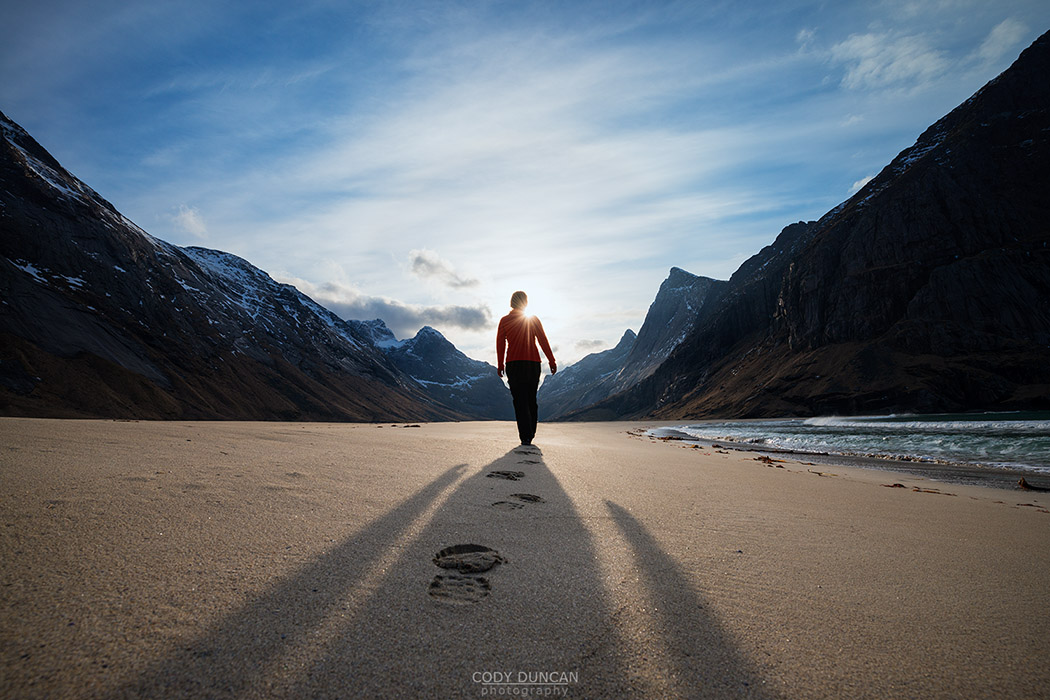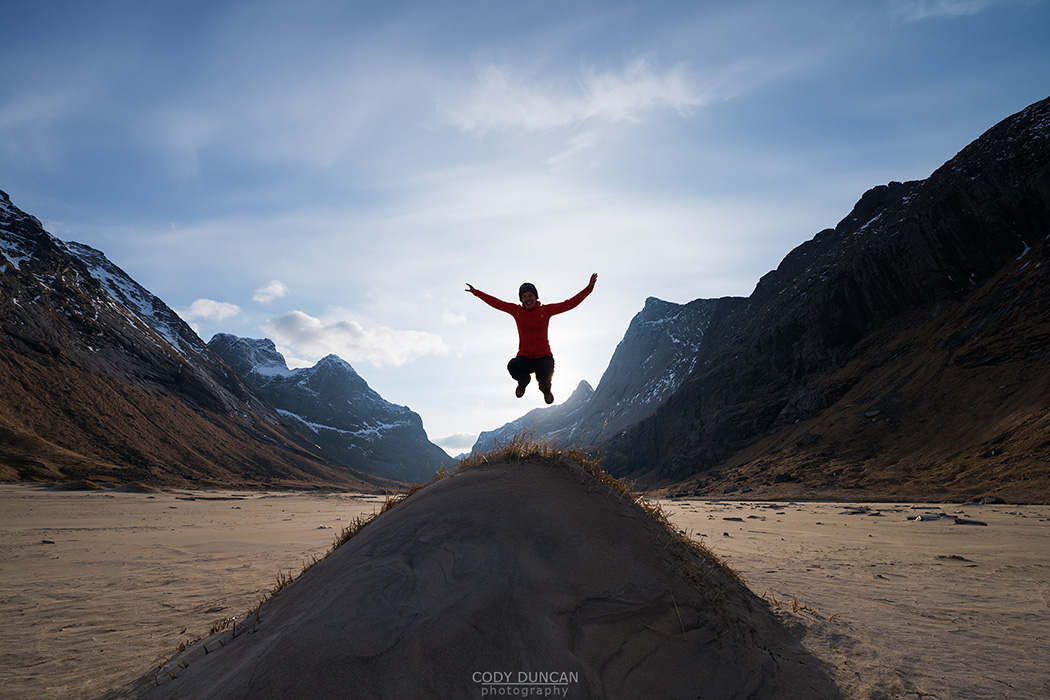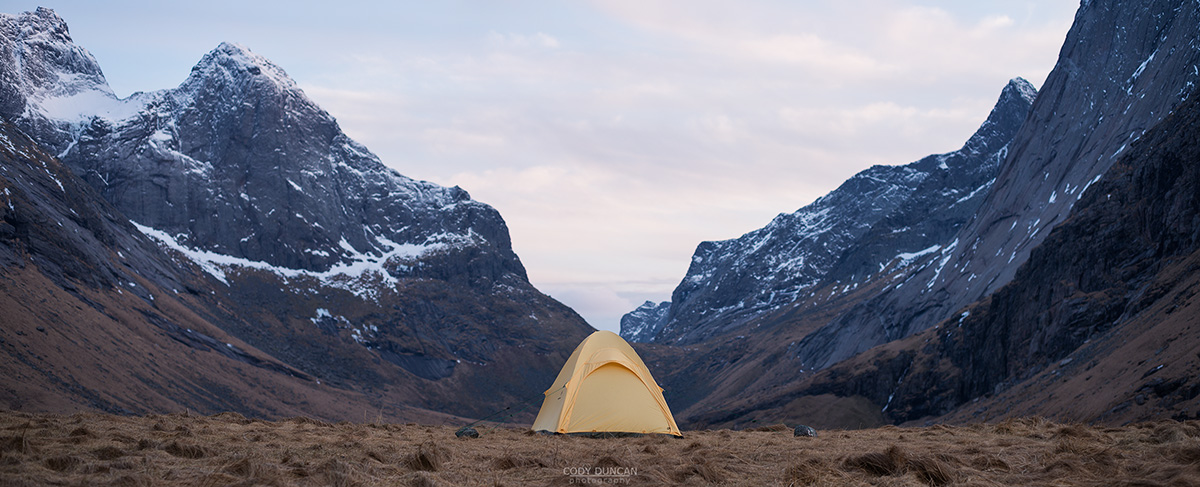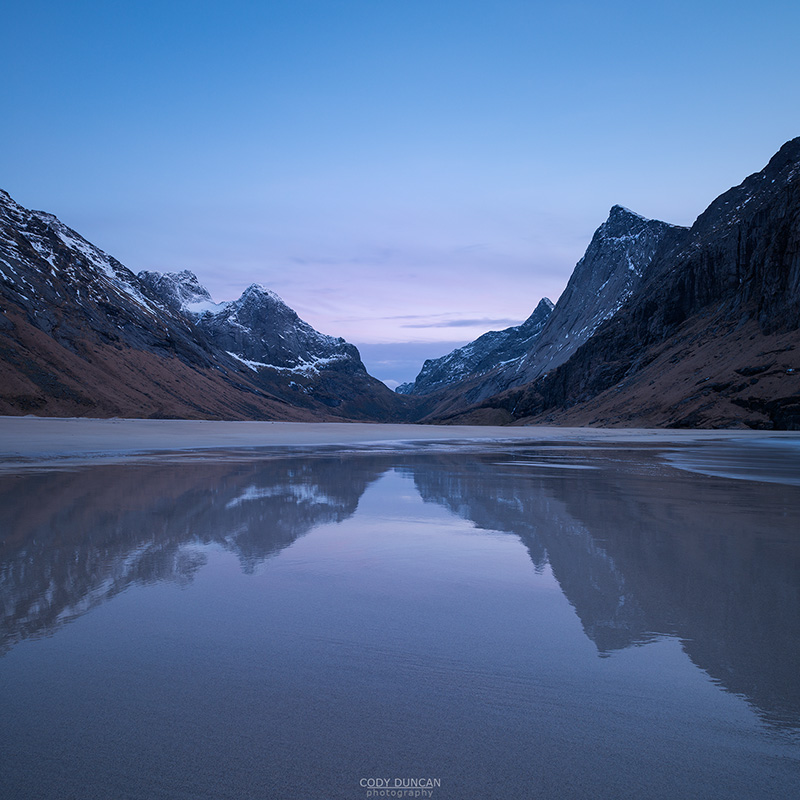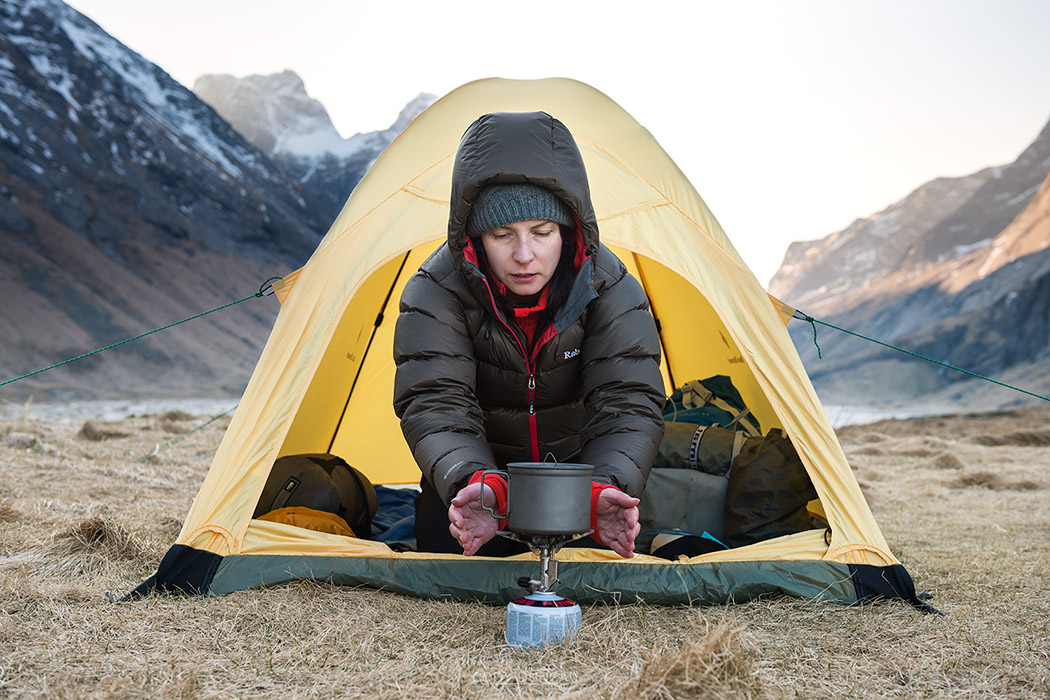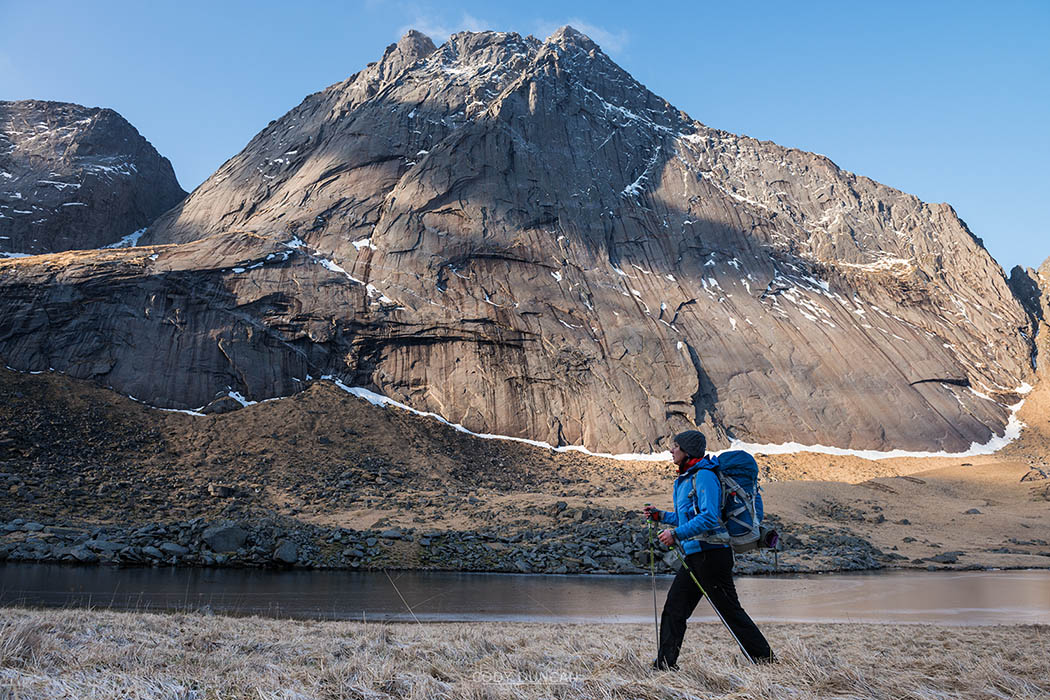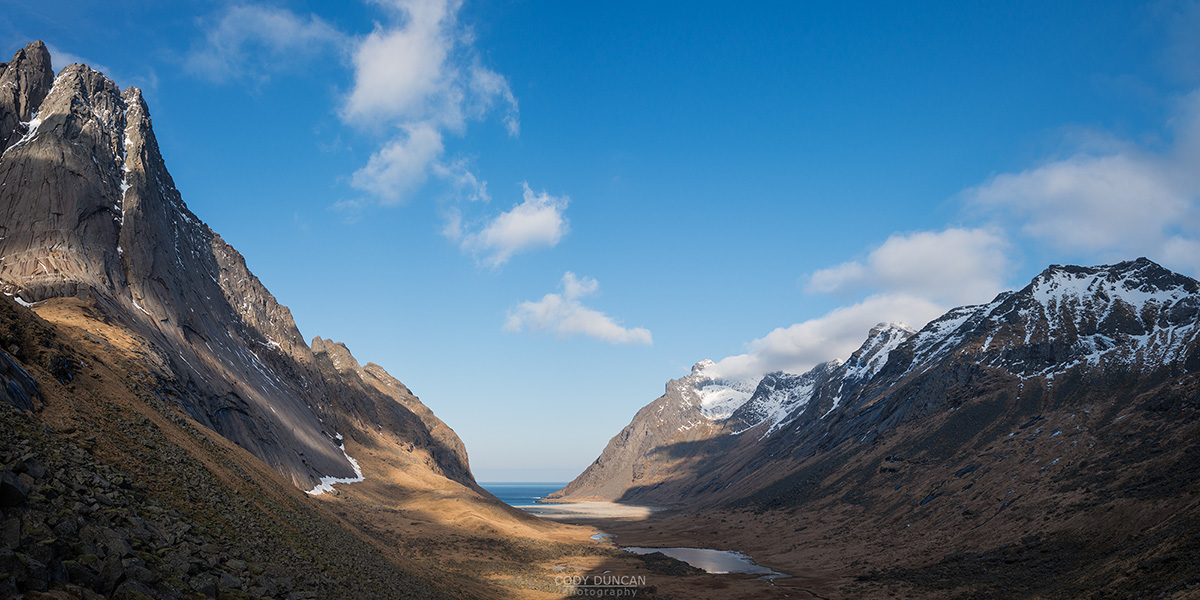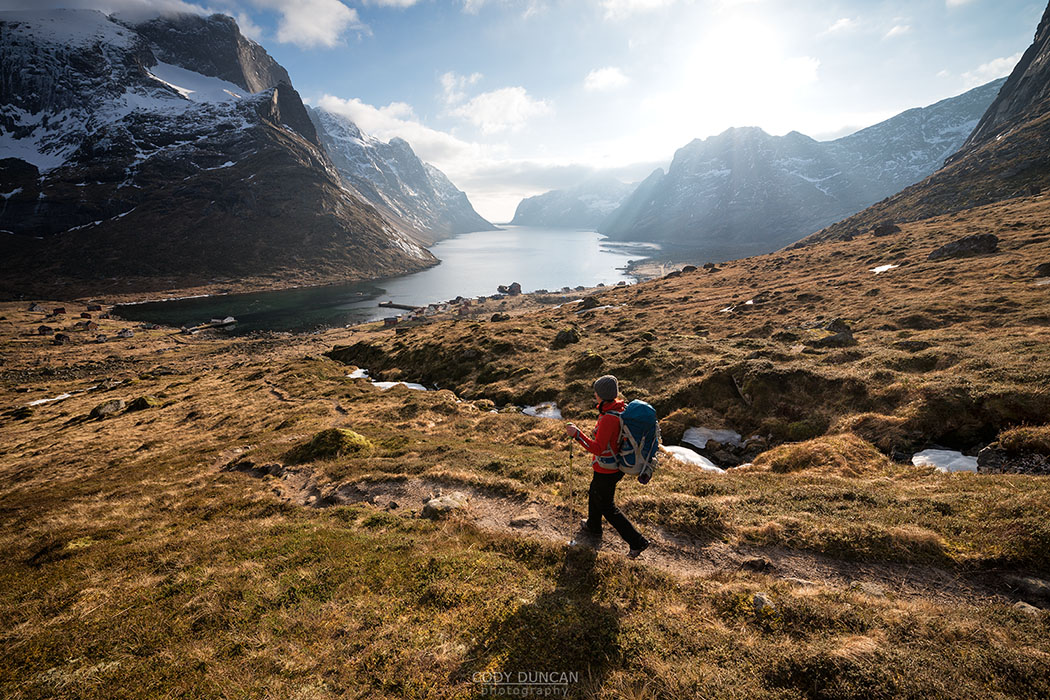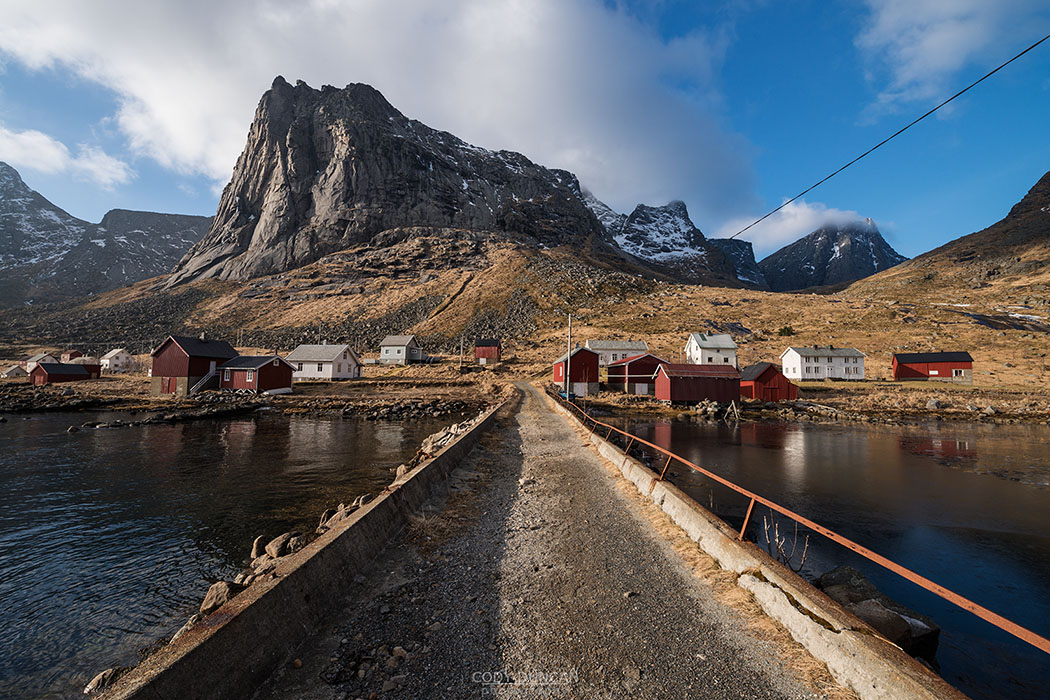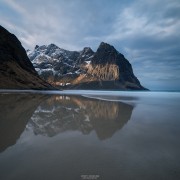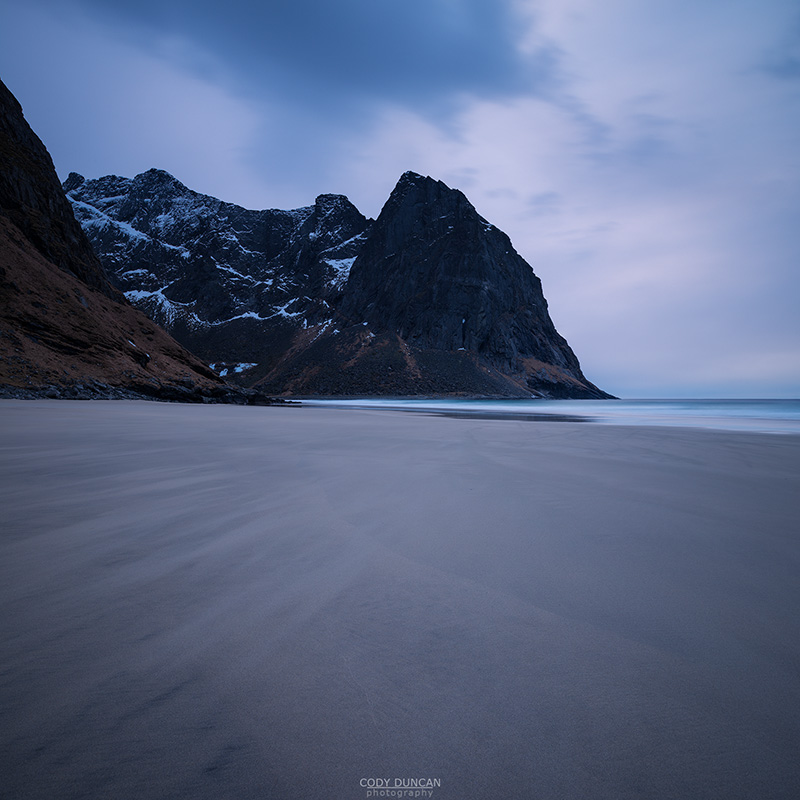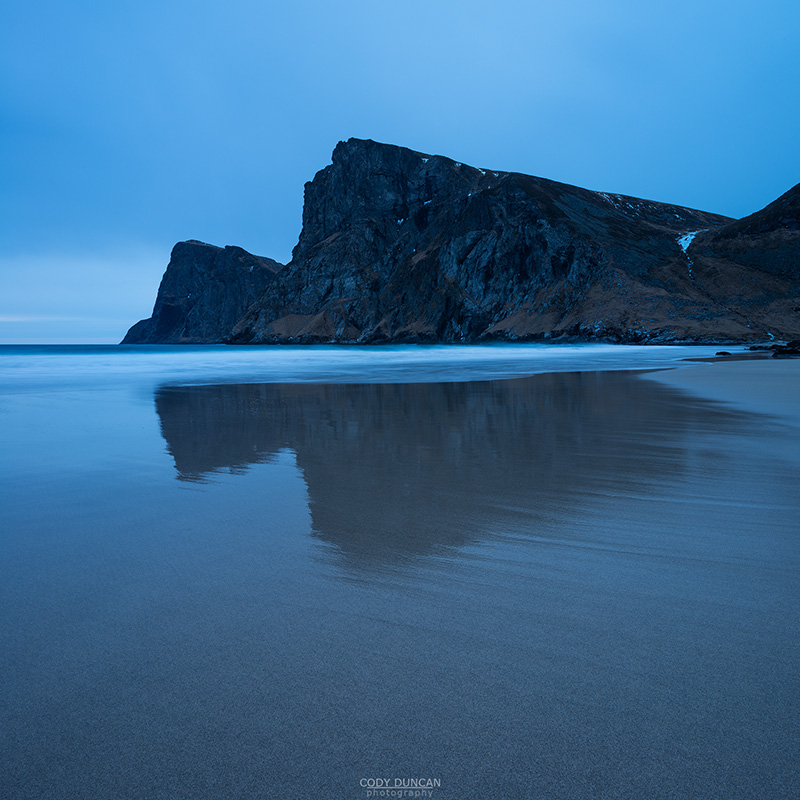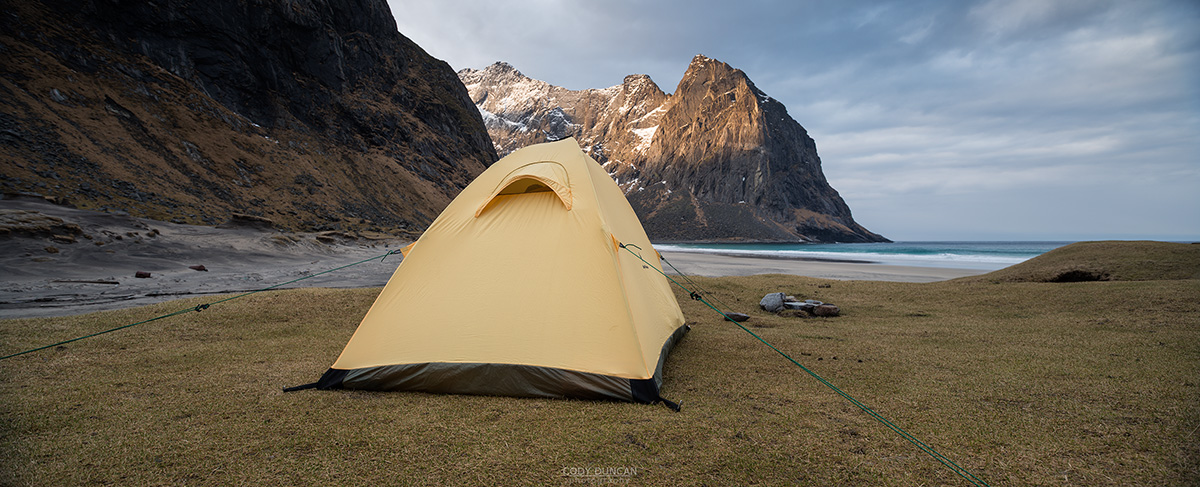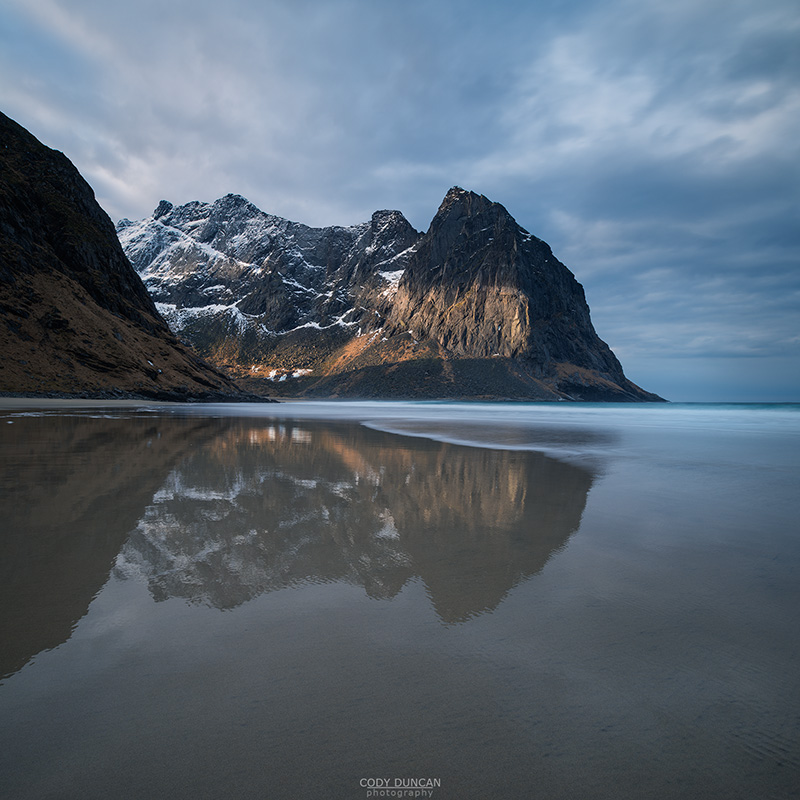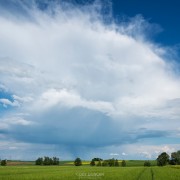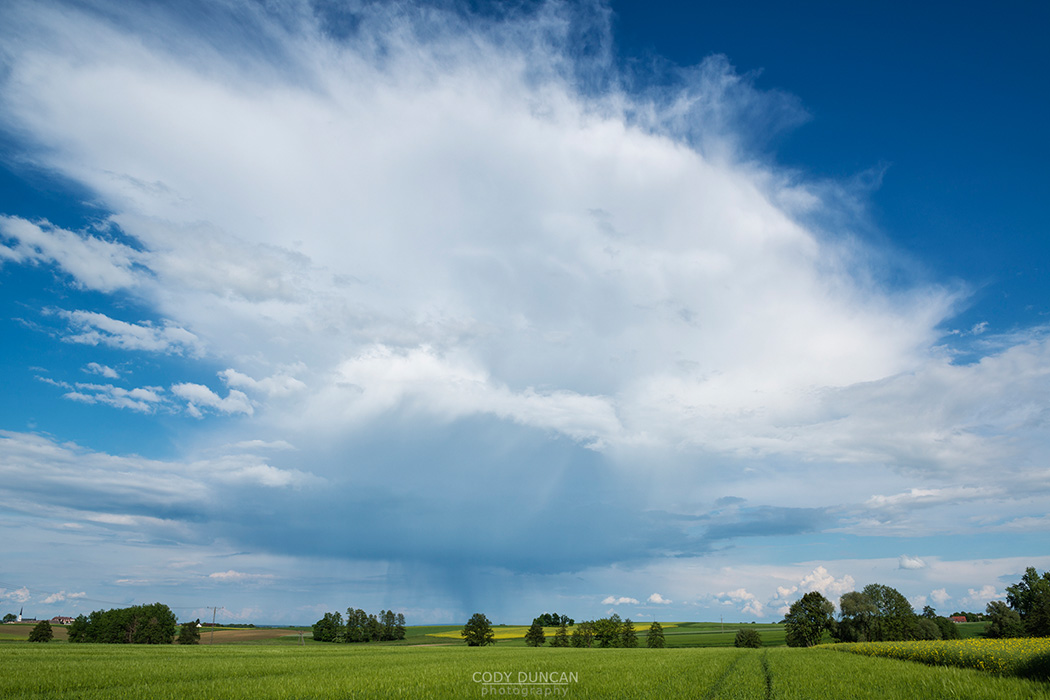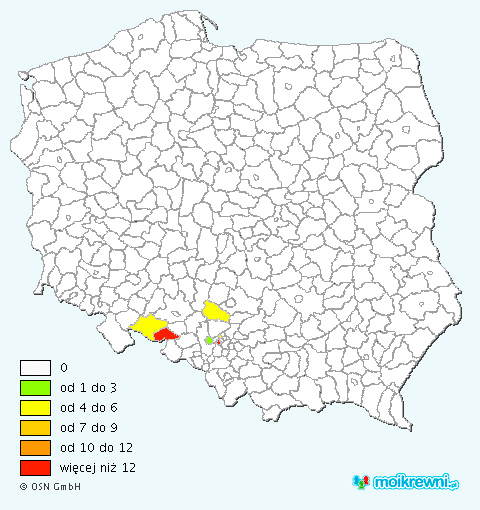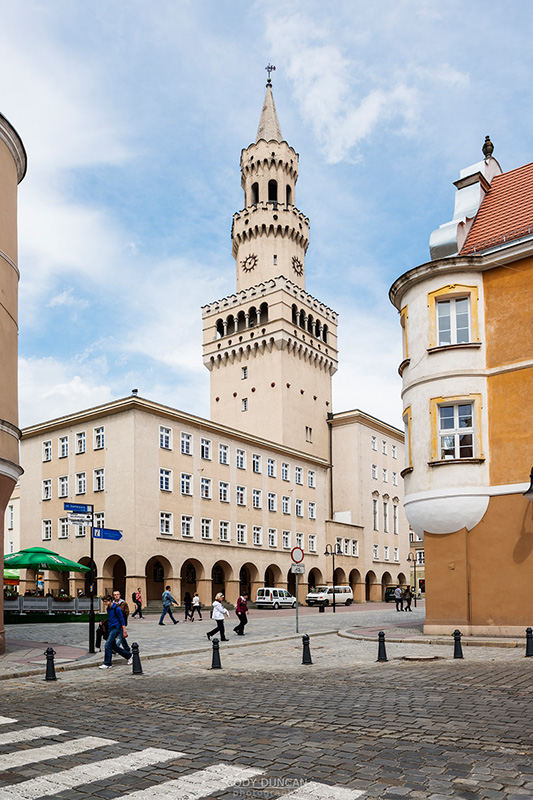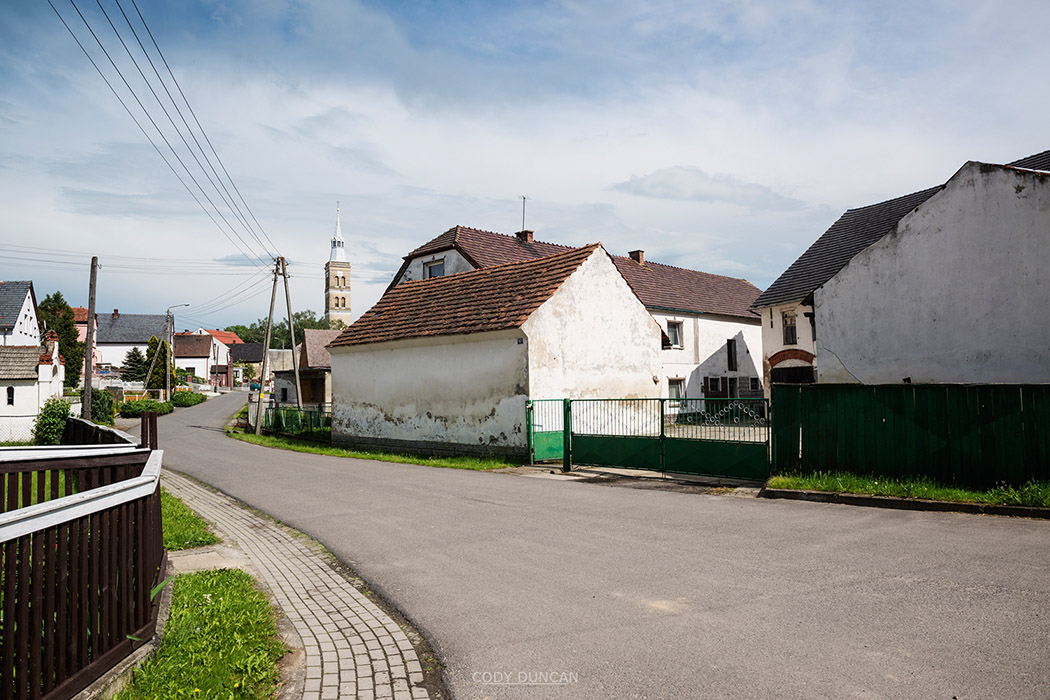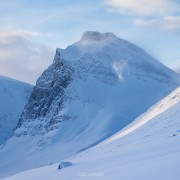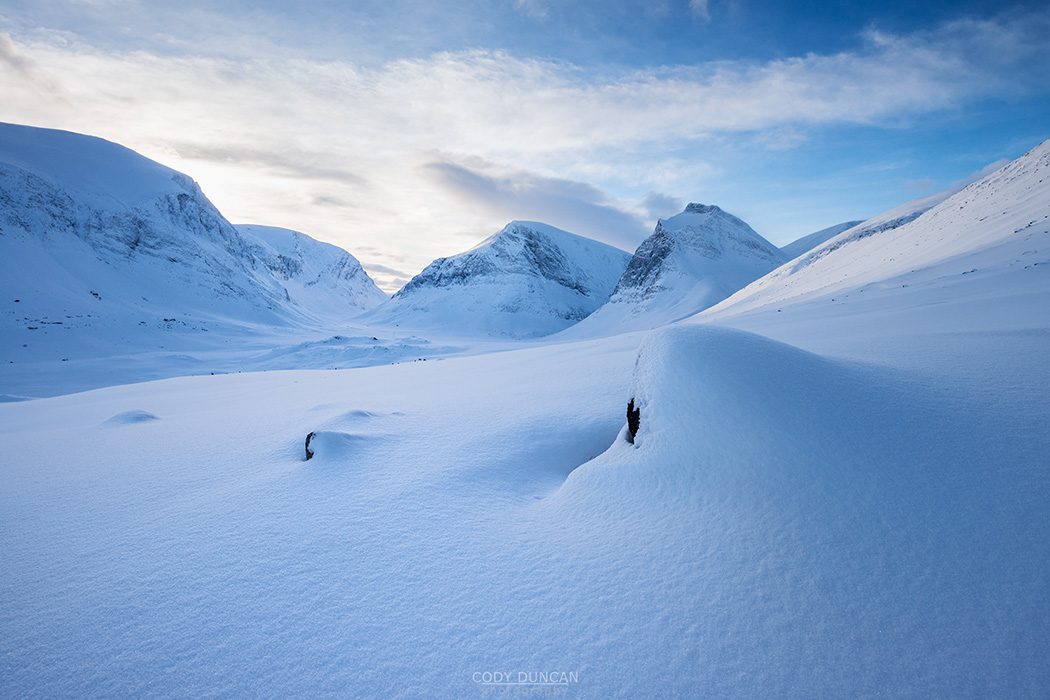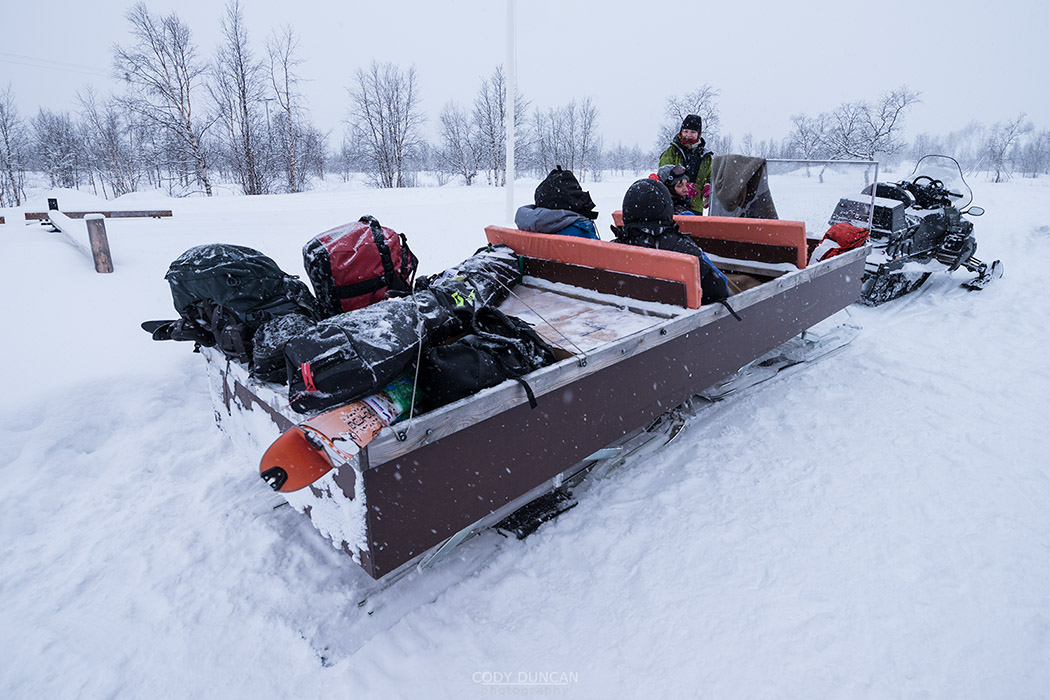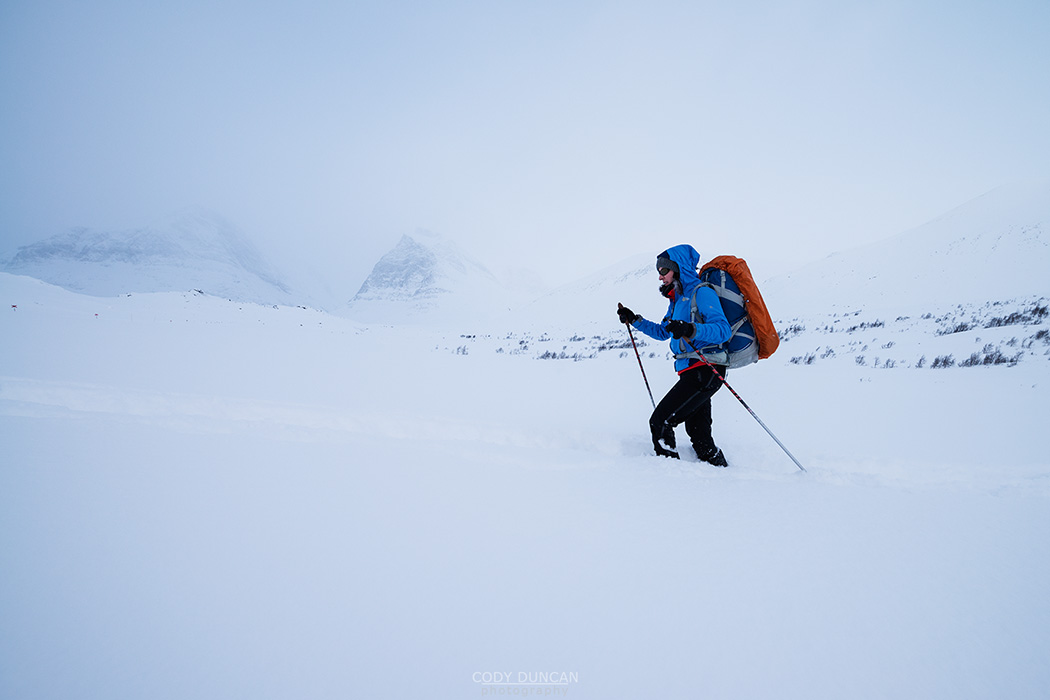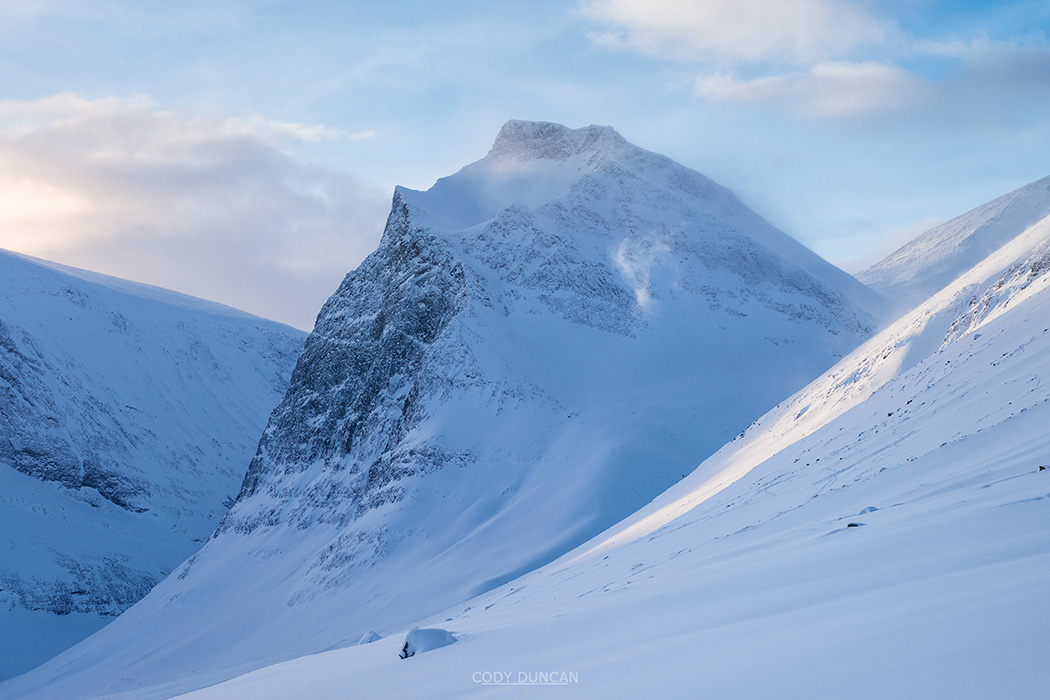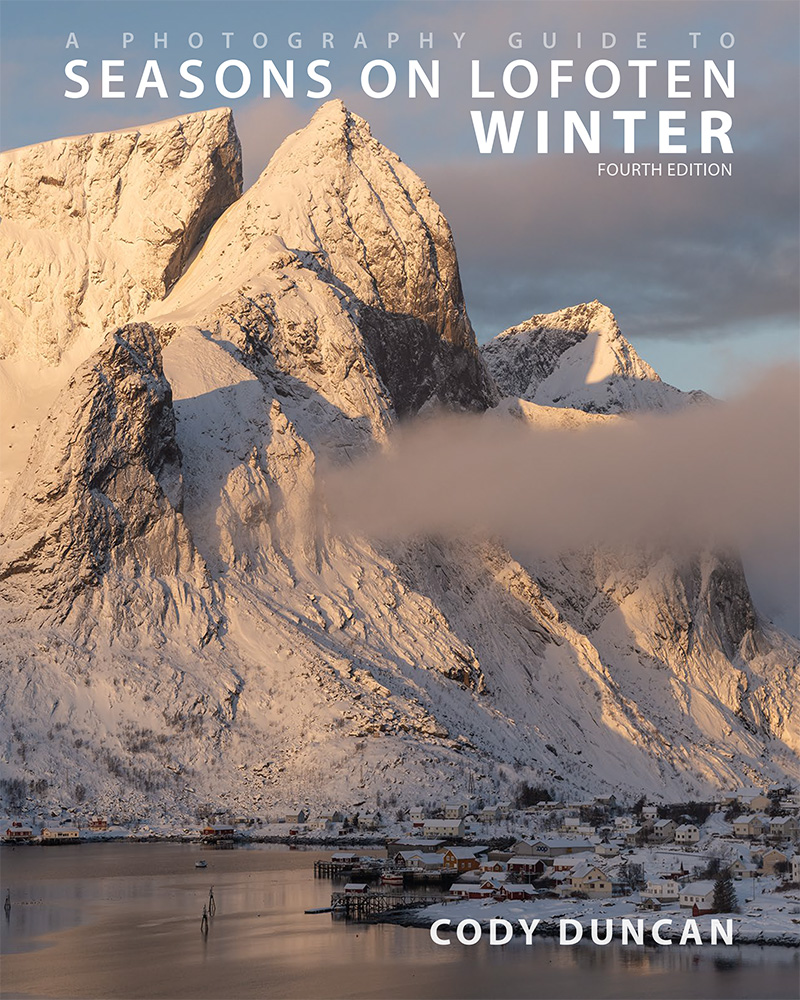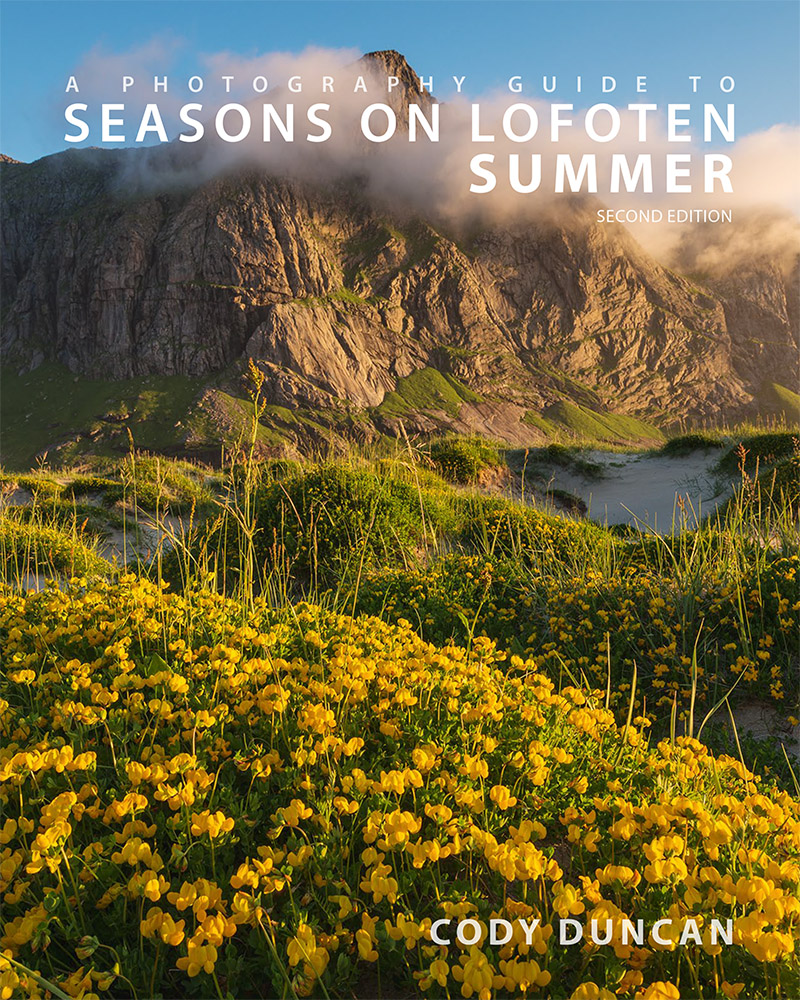Lofoten – Norway Travel Plans – Summer/Autumn 2014
Photo: Sunrise rainbow at Bunes beach, Moskenesøy, Lofoten Islands, Norway. August 2013
A couple days ago I booked two sets of plane tickets for Norway! As many times as I’ve been to Lofoten now, I still get excited once I commit to a plan and get things rolling. Only seven weeks of waiting left – well, I’ll hopefully keep quite busy at work to be able to pay for it all. If not, I’ll be selling off some gear that doesn’t see much use anymore.
I was actually getting a little stressed, as I waited a little too long and prices were getting expensive! But for some reason I remembered that Norwegian Airlines now has a Los Angeles – Oslo flight (direct). Checking prices, it was about 1/2 price of anything else I could find (as I write this today, July 2rd, you can fly LA – Oslo (via Stockholm) on September 10th for $347 one way. Some cheaper prices if you go out a few more months). Even more so in that I need to fly to Norway, but return home from the UK – which they also have London-Gatwick – LA direct as well.
I’ve flown with Norwegian plenty of times on inter-Europe trips to Norway, but haven’t ever taken one of their long haul flights before. Knowing they are a bit ‘spartan,’ (ie: you need to pay for anything extra, even food) I’m not 100% sure what to expect, but for the price, I think I’ll be happy. And hell, even half the United flights I seem to end up on don’t even have personal TV screens. It worked out as the most convenient connection to get me to Tromsø anyhow.
Sorry to sound like an advertisement for Norwegian. Though unfortunately for me, I don’t get to write one of those ‘This post was brought to you by Blah Blah Blah, opinions my own etc…’ at the bottom of this post – which would mean I got something for free. I didn’t. I just think this is a good deal for us Americans heading to Norway, and elsewhere in Europe. Especially for us California folk. And I really like Norwegian’s system of more or less considering every flight as one-way, which means it’s not any extra cost to fly to one destination and leave from another as you can easily book two separate one-way flights.
Now I just need to talk my brother into driving me to LA on a Sunday afternoon…
AUGUST – Sailing Trip to Lofoten
As I mentioned a little while back, I’m going sailing around Lofoten with Vertical Shot Expeditions. I can’t really write how excited I am about this, but I am! It is the first time I have ever signed up for any sort of tour – I’m normally quite a firm DIY type person; but there’s not really a way I could put a sailing trip together myself – well, maybe if I won the lottery or found some heavy duty sponsorship – so the opportunity to participate in this trip was too good to pass up. Hopefully I’ll return with lots of new images for this site.
SEPTEMBER – Lofoten
I have been a little on the fence about what to do after the sailing trip, which ends September 6. I have received a couple requests for some small private group tours – workshops around Lofoten for the Autumn, but so far none of these have come to fruition. I also thought about going back to Sweden for another try at Sarek national park. But I think it will be better if I put this off another year. Luckily, life sometimes as a way of making decisions for you.
Without going into to much detail, I will be spending the whole of September on Lofoten. I’ve already spent several hours looking at the topo maps at UT.NO, planning for the next series of mountain hikes to add to this website. I think I’m gathering a pretty good list of peaks that I’m trying to sort out into various priority levels. Though I’m not overly optimistic that the mostly calm, dry weather of the last two years will repeat itself again, so we’ll see how many mountain days I actually get. There are also a few peaks I would like to revisit, like Himmeltindene, where I didn’t have the best Photography weather on my previous trip. And there are a few seldom photographed valleys full of birch trees that will hopefully turn a brilliant gold come the second half of the month, with vertical walls of granite rising above. So that might requite a few nights out in the tent, waiting for the light.
OCTOBER – Norway Road Trip
I’ll probably leave Lofoten around the first of October, although I’m a little hesitant to leave right as the northern light season is beginning, hopefully I’ll see something decent by the end of September. From Lofoten, I’ll have two weeks to travel through central Norway, and visit some places that have been on my ‘to photograph’ list for a while. Though I fear I might be a little late in the year for some places. In mid October I need to be in the Netherlands to catch a ferry to the UK. Which is probably for the better, as the car wont have snow tires.
By the beginning of November I’ll be home in California again, counting down the days until January 2015 when I head back to Lofoten to help guide a Photography workshop by Muench Workshops.

